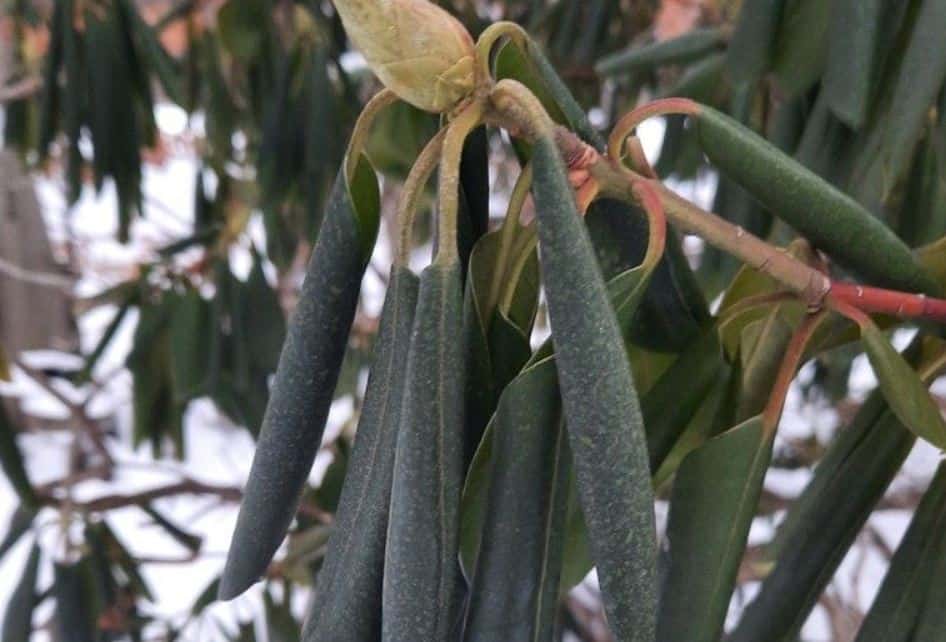Do you ever check the leaves of your plants to determine the weather? If you had rhododendrons, you could. People have been doing it for more than a century. Your rhododendron leaves will curl as the temperature becomes colder; this is a true phenomenon known as “thermotropic” leaf motions. To learn more, continue reading.

Rhododendron’s Curling Leaves
You probably already know what Rhodes leaves look like, whether or not you have them in your landscape. Rhododendron leaves are typically generally horizontally oriented and flat. However, as one gardener put it, if winter temperatures drop significantly, you might notice the leaves coiling and hanging like dark green beans.
There is no denying that this occurs. Scientists first became aware of this occurrence in the 1800s and began investigating it. Why do the leaves seem to be clutching themselves as they droop and curl in the cold? Many gardeners still have the same question today. And a lot of hypotheses have been put out.
Theories About Rhododendron Leaf Curl
Several explanations exist for why cold temperatures could cause rhododendron leaves to curl. However, nearly all of them have been disputed or proven false.
According to one idea, this broadleaf evergreen’s reoriented leaves are nature’s attempt to lessen the snow burden on them. The supporters argued that the snow accumulation might destroy branches if the rhodie leaves remained spread out. However, regardless of leaf position and without harming the plant, a significant amount of snow can build up on the branches of these plants.
Another hypothesis suggested that rhododendrons curled their leaves to prevent water loss. The danger of desiccation may be reduced when the leaves droop and curl because they may increase the air’s humidity. However, there is no net water transport into or out of the leaves during the winter months since rhododendrons close their stomata during the colder months.
An Explanation for Leaf Curl in Rhododendrons
The current explanation for the two distinct processes of leaf drooping and curling in rhododendrons throughout the winter includes independent causes. Temperatures below freezing cause leaf curling, in which the margins cup inward. Recent theories suggest that the waxy cuticle of the leaf’s top side serves as a barrier between the weak underside and the cold air.
A shift in the angle at which the leaf is positioned is a component of leaf droop. At a lower temperature, approximately 25 degrees F, this doesn’t happen. The foliage is most susceptible to radiation during this time. Since rhododendron species are shielded from the sun and extreme temperatures during their growing season by a deciduous canopy, sunscald is more dangerous to them in the winter than in summer.
Winter, however, removes this defense. The photosynthesis-related leaf cell membranes are especially prone to injury and may be destroyed permanently. The plant reduces excess light and cold by lowering its leaves vertically.
This indicates that when it becomes chilly, rhododendron leaves curl and droop. Look at your rhododendron the next time the weather gets cold, and decide for yourself.


